Erosion
Erosion is the process by which soil and rock are removed from the Earth's surface by natural processes such as wind or water flow, and then transported to another location. This natural phenomenon can have significant impacts on the landscape, as it can change the shape of the land over time.
Causes of Erosion
Erosion can be caused by a variety of natural forces, including:
- Water: The force of water from rivers, streams, and ocean waves can wear away soil and rock, carrying sediments to new locations.
- Wind: Wind can pick up and transport loose particles of soil and sand, leading to the erosion of land surfaces.
- Ice: Glaciers and ice sheets can cause erosion through the movement of ice over land, carving out valleys and shaping the landscape.
Types of Erosion
There are different types of erosion that can occur, including:
- Water Erosion: This type of erosion occurs when water flows over the land, carrying away soil and rock particles. It can lead to the formation of gullies, stream channels, and river valleys.
- Wind Erosion: Wind erosion happens when strong winds lift and transport loose particles of soil and sand, leading to the formation of sand dunes and the loss of fertile topsoil.
- Glacial Erosion: Glaciers can erode the land by scraping and plucking rocks and soil as they move, creating valleys, fjords, and other distinctive landforms.
Effects of Erosion
Erosion can have several significant effects on the environment, including:
- Loss of Soil Fertility: Erosion can remove the nutrient-rich topsoil, which is essential for plant growth, leading to decreased fertility and agricultural productivity.
- Landform Changes: Erosion can reshape the land over time, creating new landforms such as canyons, valleys, and coastal cliffs.
- Sedimentation: Eroded sediments can be deposited in rivers, lakes, and oceans, affecting water quality and aquatic habitats.
Preventing Erosion
There are ways to prevent erosion, including:
- Planting Vegetation: Vegetation, such as trees and grass, can help stabilize the soil and reduce erosion by holding it in place with their roots.
- Contour Plowing: Farmers can plow their fields along the contours of the land to reduce the speed of water runoff and prevent soil erosion.
- Building Retaining Walls: Constructing retaining walls can help prevent the erosion of slopes and hillsides by providing structural support.
Study Guide
Here are some key points to remember about erosion:
- Define erosion and explain its causes.
- Describe the different types of erosion and provide examples of each.
- Discuss the effects of erosion on the environment and human activities.
- Explain methods to prevent erosion and their importance in maintaining a healthy ecosystem.
Remember to review the causes, types, effects, and prevention methods of erosion to gain a comprehensive understanding of this important geological process!
.◂Science Worksheets and Study Guides Third Grade. Changes on earth
Study Guide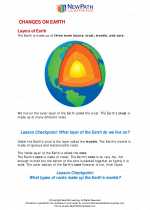 Changes on earth
Changes on earth  Activity Lesson
Activity Lesson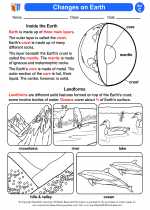 Changes on Earth
Changes on Earth  Worksheet/Answer key
Worksheet/Answer key Changes on earth
Changes on earth  Worksheet/Answer key
Worksheet/Answer key Changes on earth
Changes on earth  Worksheet/Answer key
Worksheet/Answer key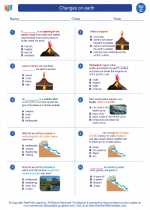 Changes on earth
Changes on earth  Worksheet/Answer key
Worksheet/Answer key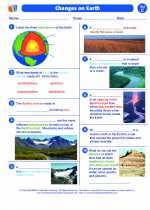 Changes on earth
Changes on earth  Vocabulary/Answer key
Vocabulary/Answer key Changes on earth
Changes on earth  Vocabulary/Answer key
Vocabulary/Answer key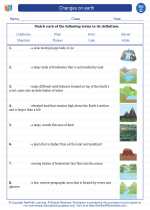 Changes on earth
Changes on earth  Vocabulary/Answer key
Vocabulary/Answer key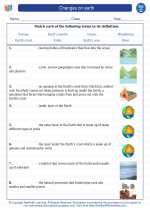 Changes on earth
Changes on earth 

 Activity Lesson
Activity Lesson
 Worksheet/Answer key
Worksheet/Answer key
 Worksheet/Answer key
Worksheet/Answer key
 Worksheet/Answer key
Worksheet/Answer key
 Worksheet/Answer key
Worksheet/Answer key
 Vocabulary/Answer key
Vocabulary/Answer key
 Vocabulary/Answer key
Vocabulary/Answer key
 Vocabulary/Answer key
Vocabulary/Answer key

The resources above cover the following skills:
Concepts of Earth Science (SD1, SD2, SD3, SD4)
The student demonstrates an understanding of the forces that shape Earth by identifying and comparing a variety of Earth's land features (i.e., rivers, deltas, lakes, glaciers, mountains, valleys, and islands).